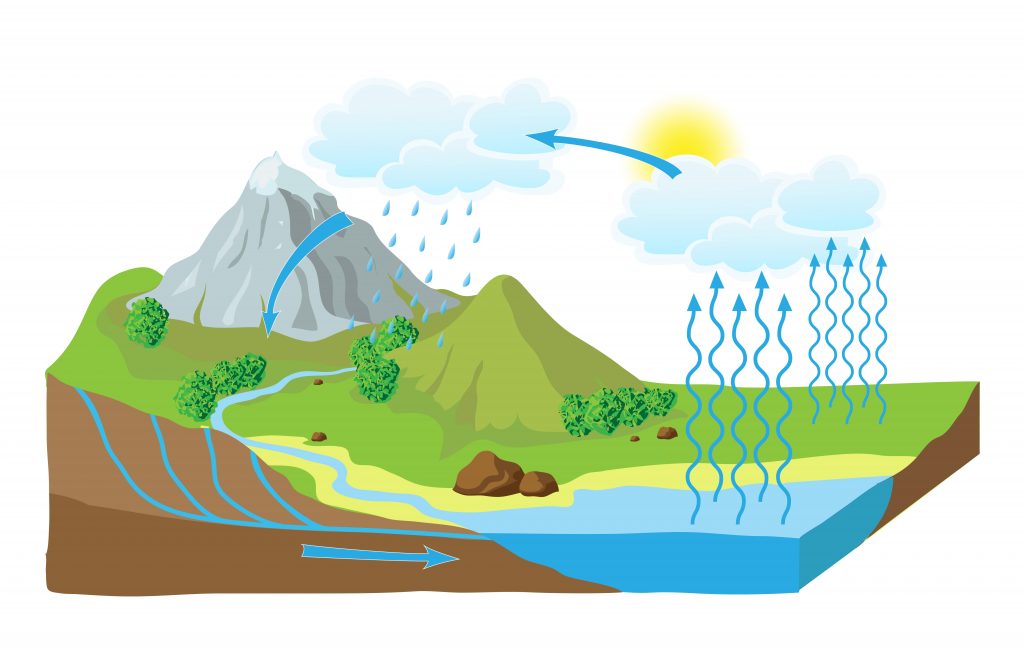These experiment look at the water cycle and why water is so important. Water is the most common substance found on earth and is essential for all forms of life. Water can dissolve nearly anything. It can exist as a gas (water vapour and steam), a liquid (water) and a solid (ice).

Water Cycle
The natural water cycle shows the constant movement of water around the environment. Make a mini terrarium to see how water moves through the processes of evaporation, transpiration, condensation, precipitation, run-off, infiltration and percolation.
Evaporation
All Dried Up: is a simple experiment showing how evaporation rates are different based on the amount of light and heat a container of water receives.
Equipment
- 2 shallow container
- Water
Method
- Put about 10 ml of water in each dish.
- Place one container in the sunlight, or close to a light source.
- Place the other container in the shade.
- Observe each dish every 4 hours, then overnight and record what happens to the water.
Questions
- Where did the water go?
- From which container did the water disappear faster?
- What caused the water to disappear?
Condensation
Make a Cloud in a Bottle: demonstrates the concepts of air pressure and temperature in cloud making, this experiment uses a burnt match and some water to create a cloud inside of a jar.
Due to the use of matches an adult is necessary.
Water is essential for all life and is the most abundant substance on Earth. Water covers 75% of the earth’s surface, however only a very small amount is fresh water that can be used directly by people, animals and plants.
What’s in a Drop is a range of fun and easy water activities and experiments.

